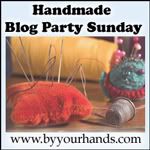Ebenezer Butterick started his company in 1863. The first patterns where for boys and men, with the patterns being made from cardboard. Mr. Butterick had his family folding the patterns in the beginning, but found folding and mailing cardboard patterns hard. With the help of his wife they began looking at different paper, and found that tissue paper worked well. Easy to fold and easy to ship. Then in 1866 the company began making patterns for ladies and where a big hit.
The idea Mr. Butterick had for his patterns first started with his wife. Sewing clothing for her son, she wished there was a graded pattern to use. So with his tailor skills and the help of his wife, a company was born at the dinning room table.
In the 1940 with WWII starting, fabric and ready made clothes where in short supply. The Butterick Company worked with the government to make patterns using less fabric, and still be stylish.
James McCall started many and selling his patterns in 1870, along with a magazine showing fashion and sewing tips. The magazine was called "The Queen", then changed to "The Queen of Fashion" in 1894. The final name of McCall's Magazine was in 1897. McCall also has the date of the pattern on the envelope. So for about 147 years we having been sewing using patterns made from tissue paper, to wear, or decorate our homes. Love it!
The fun part or sad part is looking at the size chart. I do not fit into my mothers patterns from 1961. I have gotten a little bigger lately.
Kids clothing could be let out, hems lowered, for more then one years wear. Somehow we have gotten away from this.
There are many web sites for more information, plus many for patterns for historical clothing.
.jpg)

















2 comments:
Very interesting Rose. Now you know I am not a seamstress but admire those that can take paper and make clothes!
Thanks for the history.
Enjoy your evening,
Barb
A great post Rose. I love old patterns and have lots of them - I even have an Etsy shop selling some of them. I use the tissue of partial patterns to wrap my prims. The envelopes are great for artwork too. Of course, you can always sew with them - but what to do about those tiny waistlines????
Post a Comment